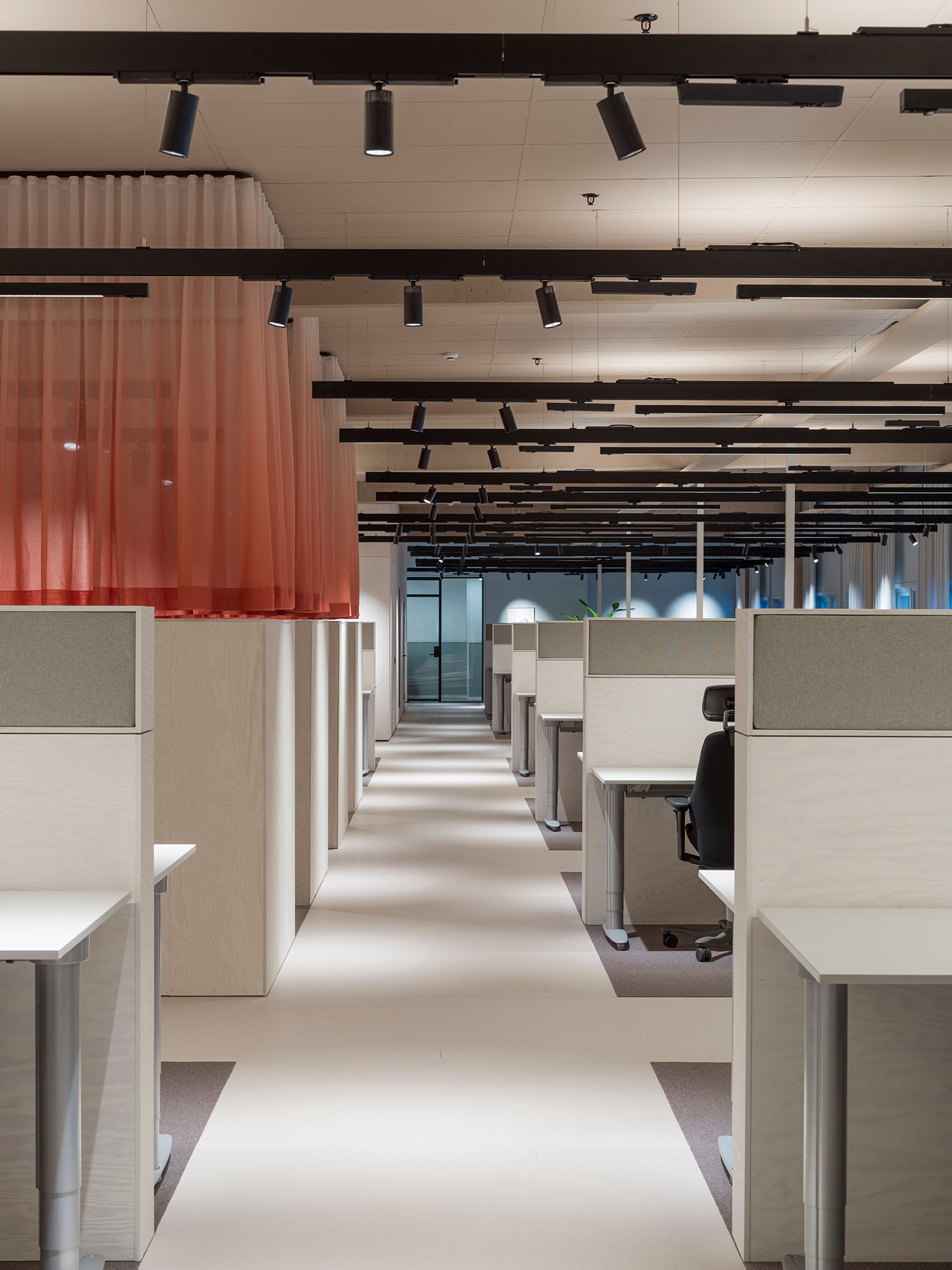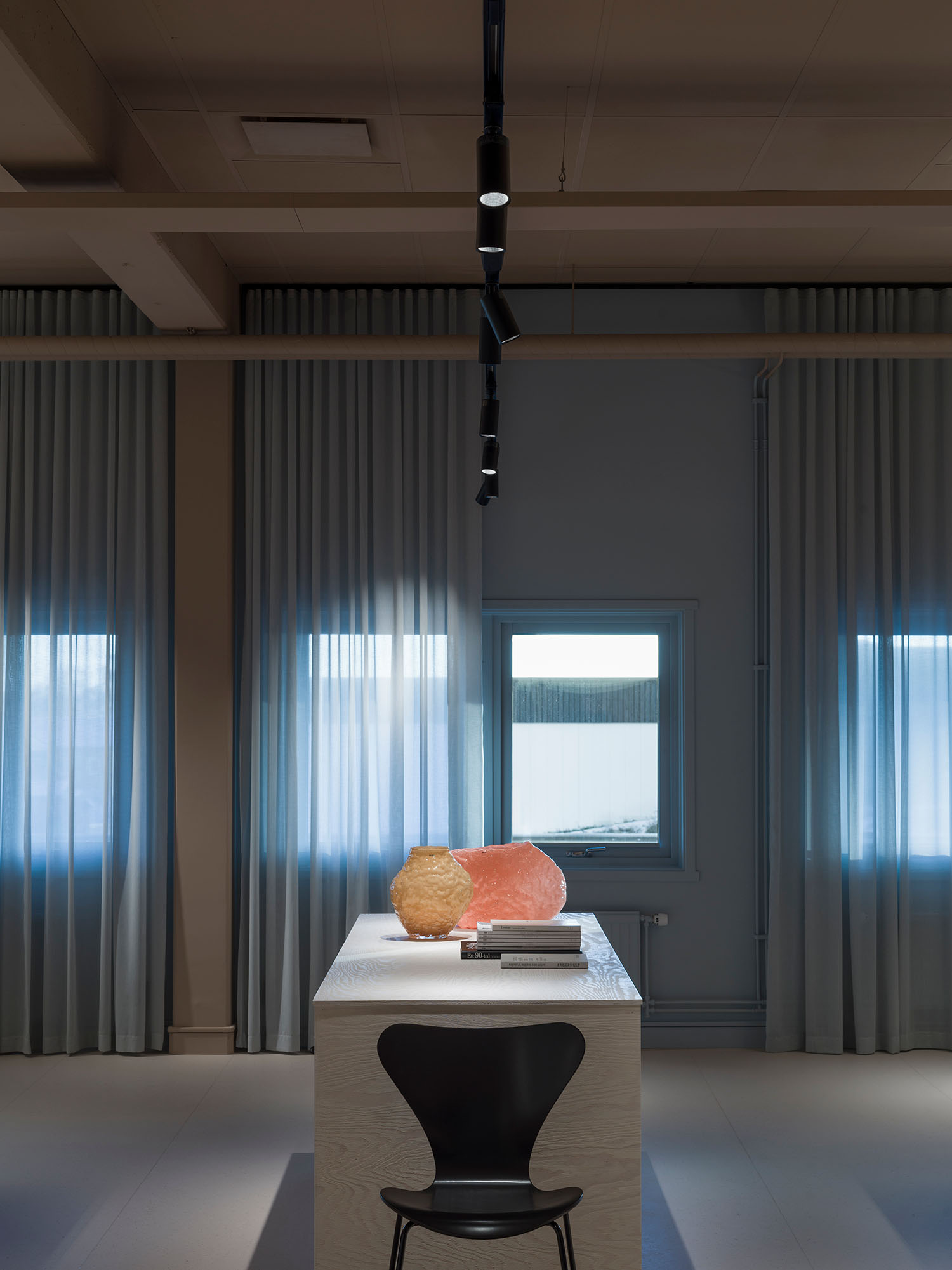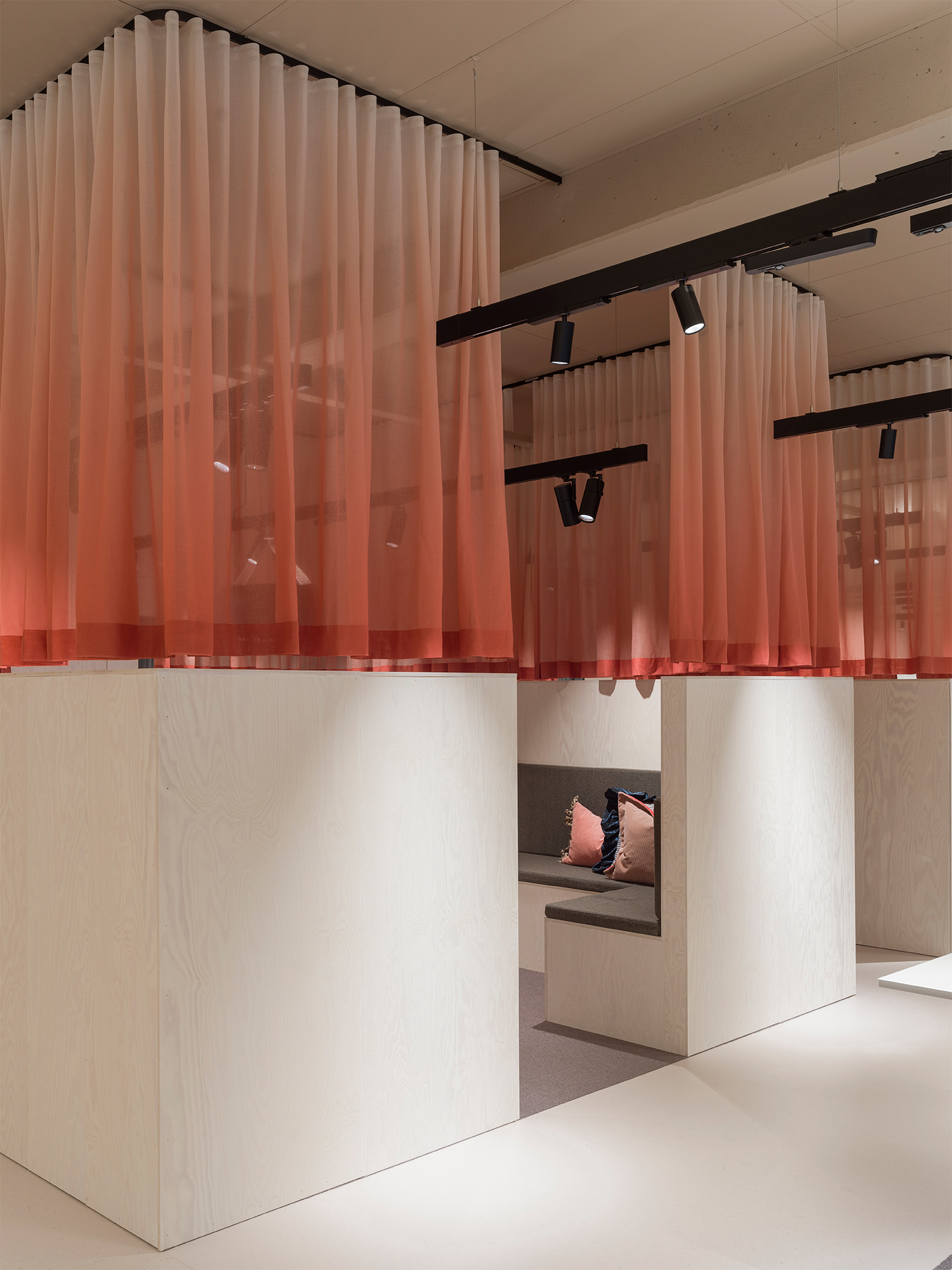
The flexible office – the innovative lighting design of the future
The office is a place in constant change, and regardless of how the design, furnishing, and operations look, lighting is an important part of the work environment. However, the path to good light can be winding and inefficient, and many factors must align throughout the construction process through property owners, interior designers, and lighting planning.
With Fagerhult's Control Track Versa track system, the flexible office is taking a significant step towards more sustainable and flexible lighting. Cecilia Niva is a product manager and has driven the development of the system. The goal has been to let the lighting of the future for innovative offices take shape, and now new, circular possibilities appear.
“The dual track provides completely new freedom around lighting design and allows the light to follow the tenants' wishes and needs. You can easily combine indirect and direct light and reach 300 lux with only uplighting. The track provides the right basic level, totally independent of the luminaires, as well as more solutions for control. For example, you can have common uplights that turn on when someone is in the room, while the direct light at the workplace only turns on when someone sits down there,” says Cecilia Niva.
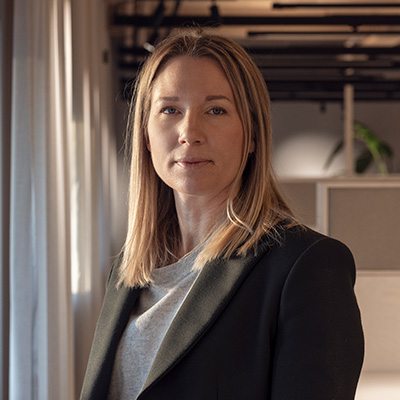 “You can easily combine indirect and direct light and reach 300 lux with only uplighting.” Cecilia Niva, Product and Application manager at Fagerhult
“You can easily combine indirect and direct light and reach 300 lux with only uplighting.” Cecilia Niva, Product and Application manager at Fagerhult
Today, many luminaires are discarded before the tenant has even moved in because the property owner wants to complete the premises at the same time as the tenant is happy to plan or change the lighting and interior design at a later stage. Control Track Versa is based on a 230V system, meaning each luminaire has its own driver. The system can, therefore, grow and change with the needs of the business, and the luminaires can be reused in a completely new way.
“Many of our clients have asked for and will appreciate this. Our focus has always been to create a track system that separates infrastructure and luminaires and makes installation and use independent of each other. This provides benefits for both sustainability and flexibility,” continues Cecilia Niva.
FAGERHULT PRODUCTION OFFICE
Greater flexibility also comes with more efficient use of the luminaires. The track system's easy handling and versatility mean that each luminaire can be moved, adapted, and reused repeatedly throughout its entire life cycle.
“Long-term use positively affects sustainability over time and as the business and furnishings change. It also creates great creative space for lighting designers, architects and interior designers.” says Cecilia Niva.
Creativity and flexibility
During the development of Control Track Versa, one of the goals has been to make it easier for lighting designers, architects and interior designers to plan lighting and create high-quality environments. The track system can be described as a toolbox for lighting, as each lighting component is independent, and you can create lighting environments and effects more flexibly. The VIL luminaire makes uplights and downlights completely independent of each other as they can be mounted along entire rows, which provides an evenly lit ceiling in desired zones. Unlike a 48V system, no new calculations are needed when luminaires are added or moved along the track.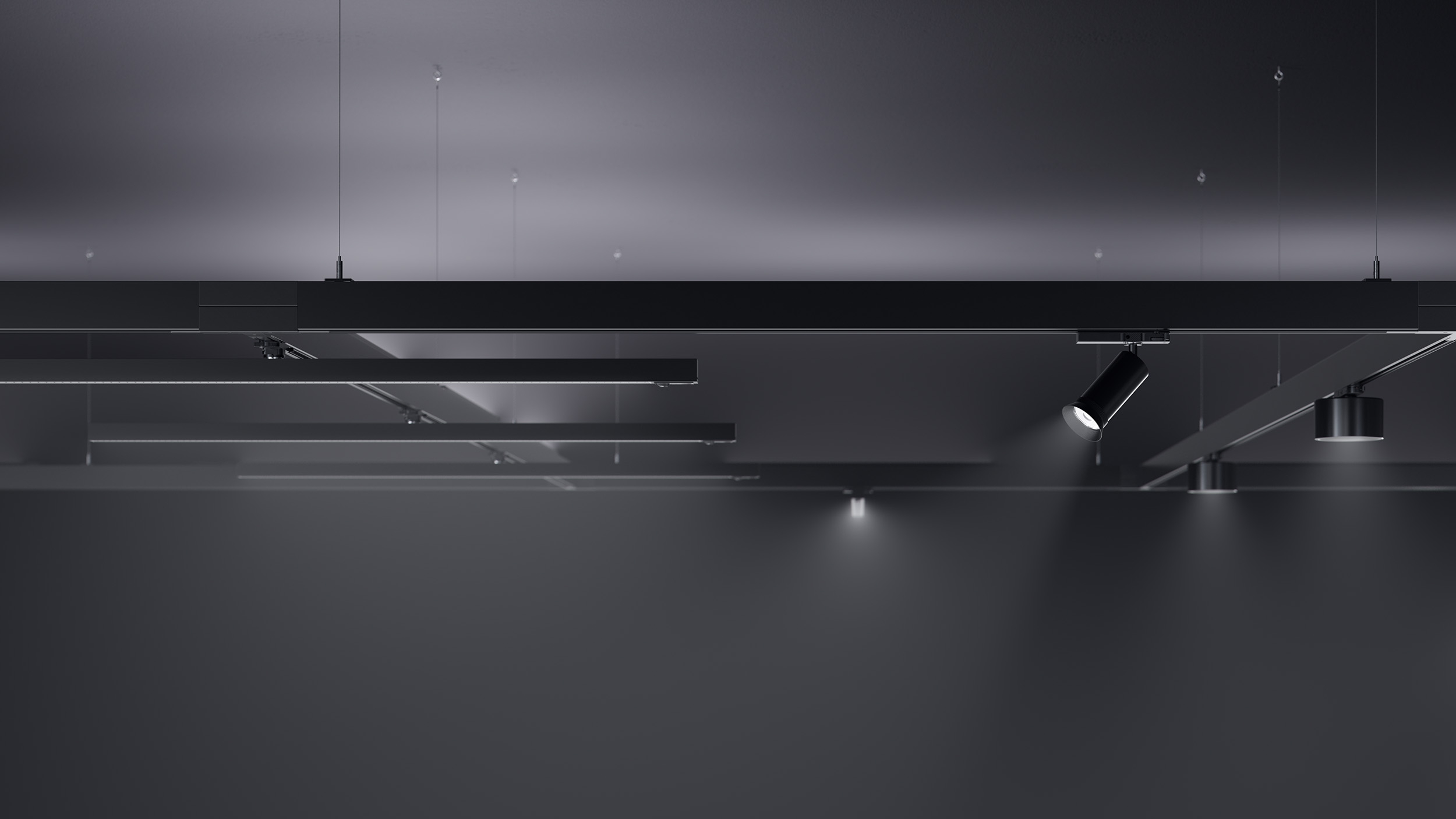
“In a way, the track becomes its own infrastructure, offering endless combinations and great flexibility. It provides new opportunities to easily combine indirect and direct light without extensive lighting planning or major decisions before the tenant moves in. It also makes it easier for property owners and tenants to maintain, update and create good lighting environments over time,” concludes Cecilia Niva.
TEXT LINDA KARLSSON
PHOTO BJÖRN CEDER
Related News

Fagerhult launches Control Track Versa – and adds new, sustainable light to office venues
With the launch of the modular and suspended lighting system Control Track Versa, Fagerhult opens up new lighting possibilities in offices and workspaces — for both property owners and their tenants.The new dual track combines indirect and direct, and the VIL luminaire enables 300 lux at the ceiling with just uplight. As each luminaire has its own driver, unlike a 48V system, there is no need for new calculations regarding capacity and planning when rearranging or moving luminaires. “Property owners can easily create their own lighting infrastructure and offer tenants a whole new level of freedom of choice and flexibility. The rail system has been developed with a full focus on the offices and flexible workplaces of the future in mind. We have strived for versatility and forward thinking – and new, circular opportunities for the flexible offices and workplaces of the future,” says Peter Robertsson, Product Manager, Fagerhult. Each luminaire can be easily combined and arranged along the track, and the lighting design can be updated when tenants move in – or want to change the interior or overall aesthetics of the office. “The ease of moving the luminaires along the track means that all products can be used throughout their life cycle. This flexibility also brings a new creative height to architects and lighting designers,” says Peter Robertsson. No matter the ceiling’s height or characteristics, Control Track Versa enables coherent architectural aesthetics and highest lighting quality. With fewer points of installation, the system is easy to install. “Control Track is a long-term investment for any sustainable and forward-looking project. Based on a 230V system, you can add control systems such as Organic Response to lower energy consumption and add extra lighting comfort,” says Peter Robertsson. VIL is a luminaire developed specifically for the dual Control Track. It enables 300 lux and an even and seamless uplight, good lighting comfort and a variety of lumen output options and light temperatures. To add another level of flexibility and simplicity to Control Track Versa, Fagerhult have extended the range with products as Pleiad G4 128 Track, Zkye 55 G2 Zoom Spotlight, Notor 65 Track, and Notor 36 Track with integrated Organic Response sensor.
The office of the future — a place of change
Lighting offices has long been quite simple. Go-to solutions with 60x60 tiles, proven calculations, and an even and general light result. The advantage is that everyone can move around and sit anywhere—with the result that the light is not good for anyone. As the way we design and use the office changes, new needs arise regarding lighting. The office is a place for work, meetings, collaboration, and creativity. It follows the development of the business and changes among employees. At the same time, the general work environment in Sweden is regulated by the Swedish Work Environment Authority’s recommendations, and lighting is often designed according to established patterns. Henrik Clausen heads the Fagerhult Lighting Academy and believes that both businesses and employees feel good if the office is a pleasant environment—and that lighting contributes to this. The right light also affects many, but despite that, people often take the easy way out to achieve the work environment requirements. “I’m not saying that 60x60 tiles are bad. But they’re not good either, as the premises get the atmosphere of a rainy day. With well-thought-out flows and the proper lighting, we can create a light environment that resembles daylight and varies between the different parts of the office, and then we feel better,” - says Henrik Clausen. Quote Henrik Clausen But before an office is ready for occupancy, many parts need to fall into place, and lighting is one of them. Lisa Sandvik is a project manager at Tenant & Partner in Gothenburg and works with value-creating and sustainable property development with a focus on offices: “When we changed offices and got good lighting, it became clear how much it adds to the work environment. Nowadays, together with the architects, we like to raise the lighting issue with property owners at a much earlier stage and try to challenge them more.” says Lisa Sandvik. Flexible office bildcollage artikel 1 FAGERHULT PRODUCTION OFFICE At the same time, property owners are often far along in their design, and their processes around procurement and planning are in charge. If the costs are too high, they often settle for changing the lighting in one zone or a couple of rooms. “We have far too little knowledge about light, which is strange when we need it so much. Employees and individuals, as well as property owners, know very little about how light and contrasts affect us in everyday life – and not least in the workplace. Here, we need to learn more together and become better at finding the correct arguments and the right products to present to property owners,” says Lisa Sandvik. Quote Lisa Sandvik All projects involving offices are based on the Swedish Work Environment Authority’s recommendations and directives. But it is often difficult to demonstrate the value of good light. “Partners like us and the architects can convey more clearly to tenants what effects good lighting can have. At the same time, I would like to see property owners take a step forward in wanting to deliver prosperous and well-functioning workplaces. We need to learn more about light in Scandinavia. We have it both with us and against us,” says Lisa Sandvik. A trend that Tenant & Partner see today is that larger employers are advocating for employees to be in the office for a larger part of the workweek. Surveys show that people want to be able to work undisturbed and focused. “We see an increased need for focus rooms and quiet workplaces with good technology and the right ergonomics. Shared spaces are, of course, still needed, but above all, you want to be able to work focused and undisturbed in the same way you can do at home. The office, therefore, needs to be an environment where our employees feel comfortable, feel good, and are productive, and lighting is an important factor there,” concludes Lisa Sandvik.
